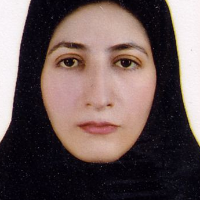Estimation of breeding value of seed related morpho-physiological traits in maize (Zea mays L.) under normal and salinity stress conditions based on SNP marker
Author(s):
Article Type:
Research/Original Article (دارای رتبه معتبر)
Abstract:
Studying the genetic structure of populations and primary genetic reserves is one of the main priorities of maize breeding programs. Molecular markers are highly efficient in estimating the breeding value of genotypes. A total of 73 maize genotypes prepared from different research centers (Razi University of Kermanshah, Khorasan Razavi Agricultural and Natural Resources Research Center, Seed and Plant Improvement Institute (SPII) of Karaj, were evaluated in a completely randomized design with three replications under normal and salinity stress of 8 dS/m in pot conditions. Based on the results of analysis of variance a significant difference was observed between genotypes in most of the studied traits in each one of the conditions; which indicates the existence of high diversity between the studied genotypes. Estimation of breeding value for 25 traits in 73 genotypes in each one of normal and salinity stress conditions was performed using BLUP by exploiting kinship matrix calculated based on SNP molecular data. According to the sum of ranks of breeding values for all studied traits genotypes 17, 4, 8 and 3 under normal conditions, and genotypes 3, 17, W153R, 9, 4 under salinity stress conditions had the highest rank in view of breeding value. Also, P19 L7 Kahriz, P15L4, W37A, P6 L1 and P14L1 Kahriz genotypes under normal conditions, and P6 L1, P19 L7 Kahriz and P14L1 Kahriz genotypes under salinity stress had the lowest breeding values. In general, considering all the studied traits in two conditions, genotypes 17, 3 and 4 showed high breeding value and genotypes P19 L7 Kahriz and P6 L1 showed lower breeding value, respectively. Genotypes with high breeding value have the greatest potential in transmitting the value of traits to the next generation; therefore, they can be introduced as desirable parents to improve these traits in maize breeding programs.
Keywords:
Language:
Persian
Published:
Iranian Journal of Field Crop Science, Volume:54 Issue: 1, 2023
Pages:
183 to 196
https://magiran.com/p2602657
مقالات دیگری از این نویسنده (گان)
-
Evaluation of Genetic Diversity of Iranian Spring Wheat Cultivars under Salinity Stress at the Seedling Stage using Multivariate Statistical Methods
Ronak Talebi Qormik, Hadi Alipour*,
Journal of Crop Breeding, -
Identification of REAMP markers related to morpho-phisiological and agronomic traits in oilseed sunflower (Helianthus annuus L.) under normal and limited irrigation conditions
, *
Journal of Crop Science Research in Arid Regions, -
Evaluation of Oilseed Sunflower Genotypes Using the Genotype-Trait Biplot under Normal and Limited Irrigation Conditions
, Reza Darvishzaeh
Iranian Journal of Field Crop Science, -
Principles and Applications of Next-Generation Sequencing (NGS) Technology in Life Sciences (with a Focus on Cereal Breeding)
Omid Mohammadalizadeh, *, Valiollah Mohammadi, Somaieh Soufimaleky, Danial Kahrizi
Journal of cereal Biotechnology and biochemistry,



